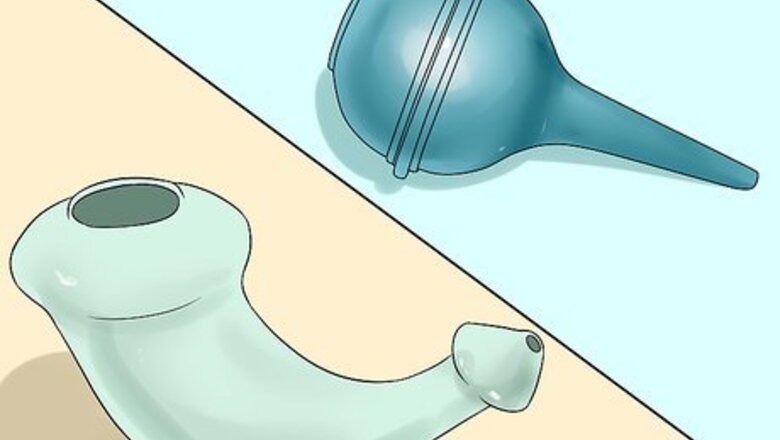
views
X
Trustworthy Source
Harvard Medical School
Harvard Medical School's Educational Site for the Public
Go to source
While it may sound complicated, nasal irrigation is a simple process where you rinse out your sinuses to remove things like allergens, irritants, and dried mucus. Studies show that flushing your sinuses is usually safe as long as you use the right kind of water and a clean nasal irrigation device.[2]
X
Trustworthy Source
US Food and Drug Administration
U.S. government agency responsible for promoting public health
Go to source
Fortunately, it's fairly easy to flush your sinuses, so you can hopefully get fast relief.
Preparing Your Equipment
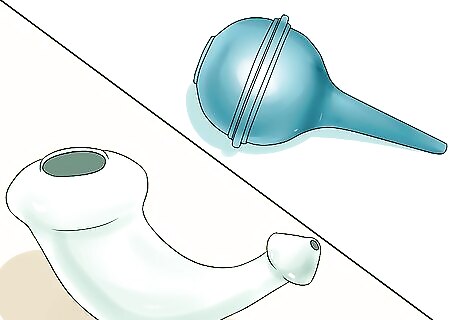
Choose an irrigation device. There are many different kinds of nasal irrigation devices on the market today. These devices are available at most pharmacies, naturopathic stores, and online. They range in size, shape, and longevity (some are disposable), but each essentially serves the same purpose: to flush out your sinuses. Common irrigation devices include: Neti pots Bulb syringe Squeeze bottle
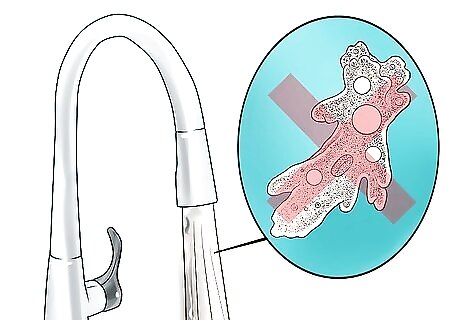
Use safe water. Most homes with indoor plumbing have tap water that is safe to drink. However, some sources of tap water contain low levels of microorganisms like bacteria, amoeba, and other protozoa. While these organisms are typically safe to drink, as stomach acid kills them on contact, they should not be used on thin membranes like the inside of the sinus. Unsafe tap water used for nasal irrigation can lead to bacterial infections and amoebic meningitis, a severe condition that is usually fatal. Distilled or sterile water is ideal. These can be purchased in most stores, and should specifically say "distilled" or "sterile" on the label. You can create sterile water at home. Boil tap water for three to five minutes, then cool until it is lukewarm. Do not use hot water, as this can cause serious and painful burns. Water that has passed through a filter with an absolute pore size of less than or equal to one micron is safe to use. These filters are small enough that they can trap microorganisms, rendering the tap water safe to use. You can buy these tap filters at many hardware stores or online.Find out more about these filters at the Center for Disease Control website.
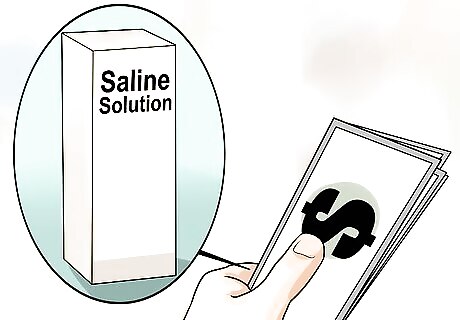
Buy or make a saline solution. You can purchase over-the-counter saline solutions designed for nasal irrigation at most drug stores and pharmacies. However, you can just as easily make your own saline solution at home. Measure three teaspoons of salt. You should only use kosher, canning, or pickling salt. Do not use salt with iodine, anti-caking agents, or preservatives, as these can irritate the nasal and sinus cavities. In a clean bowl or container, mix the salt with one teaspoon of baking soda. Add 8 ounces (1 cup) of lukewarm water that is either distilled, sterile, boiled and cooled, or properly filtered. Stir until the salt and baking soda are dissolved in the water. Use this mixture to fill your irrigation device. Make sure you are using a sterile instrument to stir the mixture.
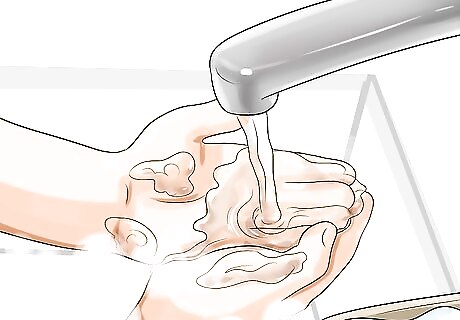
Take sanitary precautions. It's important that you take safety precautions whenever you handle, clean, and store your irrigation device. This will help prevent bacteria and other germs from contaminating your irrigation device and potentially entering your sinus cavity. Wash your hands with soap and warm water before handling or using your irrigation device. Dry your hands with a clean, disposable paper towel. Wash the irrigation device using distilled, sterile, or boiled and cooled tap water to ensure that the device does not become contaminated while washing. Let the device air dry, or wipe the inside dry with a clean, disposable paper towel.
Flushing the Sinuses
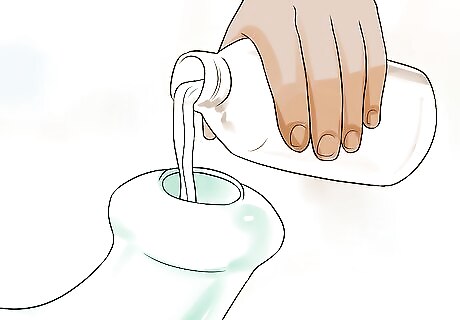
Fill your irrigation device. Whether you are using a neti pot, a syringe bulb, or a different irrigation device, ensure that the device has been properly cleaned. Fill the device with a saline solution that has either been store bought or made at home using sterile water.

Get into position. Once you've drawn water into your irrigation device, you'll need to get in place. Lean over a sink to avoid spilling water everywhere (especially water that has been through your sinus). Tilt your head sideways over the sink. Some experts recommend tilting your head at a 45-degree angle to facilitate the best flow of water without any getting into your mouth. When you're ready, press the spout of your irrigation device gently into the nostril that is closer to the ceiling (the "upper" nostril, when your head is tilted). Do not shove the spout deep inside the nose or against the septum, as this may cause discomfort or injury.

Irrigate the sinuses. Once you're in position and have inserted your irrigation device, you may begin to irrigate the nose. Proceed slowly and carefully, especially if this is your first time irrigating your sinuses. Breathe through your mouth. Do not under any circumstances attempt to breathe through your nose, as this may cause water to go into your lungs and could present a choking hazard. Slowly raise the handle of your irrigation device. If you are using a syringe bulb, you may now begin to gently squeeze the saline solution out. If you are using a neti pot, simply let the water pour slowly into the nostril.

Switch sides. Once you've irrigated from one side, you'll need to repeat the entire procedure for the other nostril. Switch the angle of your head to put the other nostril "above" the one you just irrigated.

Clear your sinuses. Once you've drained the pot on both sides, exhale through both nostrils before you attempt to inhale. You may also wish to blow your nose to remove all the excess solution and mucus/debris.
Follow up with a few drops of a nasal oil that contains sesame oil. Sesame oil used as nasal drops can help to moisten and soothe your nasal passages, and it may also help to flush them out further. Try using a nasal oil blend to lubricate the inside of your nose after you flush your sinuses.











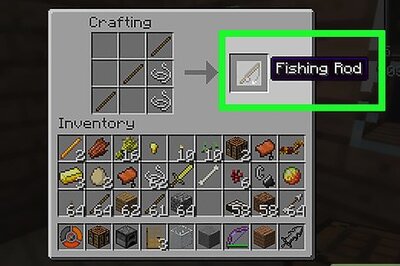







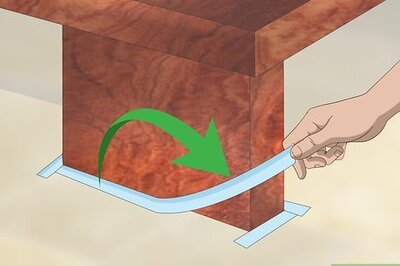
Comments
0 comment